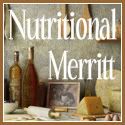 Popsicles - the perfect treat on a hot, summer day. Their sweetness and icy coldness may be refreshing but if you take a minute to check the ingredients on the package you may be in for a surprise. Most popsicles contain a whole bunch of sugar, corn syrup, food dyes, and artificial sweeteners which may contribute to weight gain, cravings, energy slumps, behavior problems and attention/focus/concentration difficulties. You are much better off forgoing the boxed variety and making your own homemade treats, feeling confident that you are giving yourself and your family a healthy alternative. Whipping up some delicious homemade creations is alot easier than you may think and only requires a few ingredients and either a food processor or a blender, some popsicle molds and you are good to go!
Popsicles - the perfect treat on a hot, summer day. Their sweetness and icy coldness may be refreshing but if you take a minute to check the ingredients on the package you may be in for a surprise. Most popsicles contain a whole bunch of sugar, corn syrup, food dyes, and artificial sweeteners which may contribute to weight gain, cravings, energy slumps, behavior problems and attention/focus/concentration difficulties. You are much better off forgoing the boxed variety and making your own homemade treats, feeling confident that you are giving yourself and your family a healthy alternative. Whipping up some delicious homemade creations is alot easier than you may think and only requires a few ingredients and either a food processor or a blender, some popsicle molds and you are good to go! -
1 container (17.6 ounces) full fat plain Greek yogurt (I use Fage brand)
-
12 ounce bag organic frozen raspberries or any fruit of your choice
-
7 stevia packets I use SweetLeaf Stevia Plus by Wisdom Foods)
-
1/2 Cup organic 1/2 & 1/2
Let frozen fruit sit out on counter for an hour or so to thaw a bit. Then add fruit and yogurt to food processor or blender and combine well. Add each stevia packet one at a time, blending well after each packet. Slowly add 1/2 & 1/2 and blend well. Consistency should be thick but pourable. Carefully pour mixture into popsicle molds and freeze. Run popsicle mold under warm water to release frozen pop when ready to eat. Makes 8-12 popsicles, depending on mold used.











